Samsung SmartThings: meet the center of your future smart home
SmartThings is like HAL, minus the whole attempted homicide business
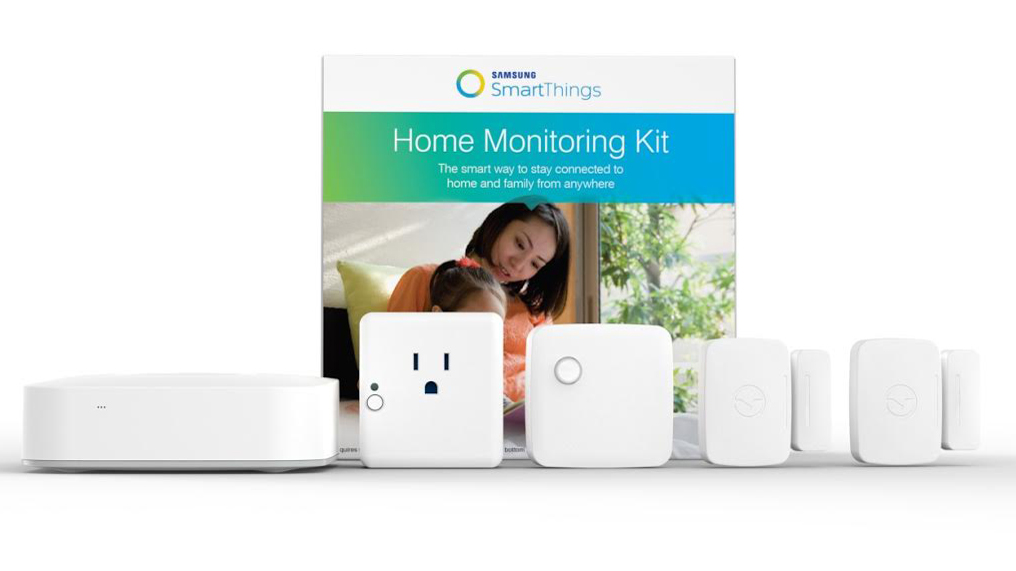
The smart home industry has truly taken off in 2018, and Samsung's SmartThings is fast becoming one of the biggest and most recognizable names in the Internet of Things space.
SmartThings could soon become one of the most popular ways to make your home more intelligent, with the Samsung's Connect Home mesh router that extends your Wi-Fi network, as well act as acting as a SmartThings hub.
Of course, routers are just the beginning. As of this year, all Samsung SmartThings devices hook into SmartThings Cloud – a powerful service that uses a cloud-based hub to connect everything from your refrigerator and washer to your TV and smartphone all into a single unified platform.
So why SmartThings over something else? It offers a number of advantages, but the reason it’s reached such high levels of acclaim is because it offers complete control of your burgeoning smart home without a monthly fee, annual contract or any sort of third-party tampering. It’s a smart home built by you, for you.
It’s been discussed on TechRadar on multiple occasions – sometimes praising it, other times calling out its shortcomings (read: the automated home is a mess). But in those times we failed to elaborate, from the beginning, what Samsung SmartThings is, and why people are buying into it right now.
So that’s exactly what we’re going to do here. That said, you’d better buckle up, what you’re about to read about is the future of smart home technology – one that initially might appear complex, but holds the potential to mitigate frustrations and ultimately make your life easier when it goes fully mainstream in the next few years.
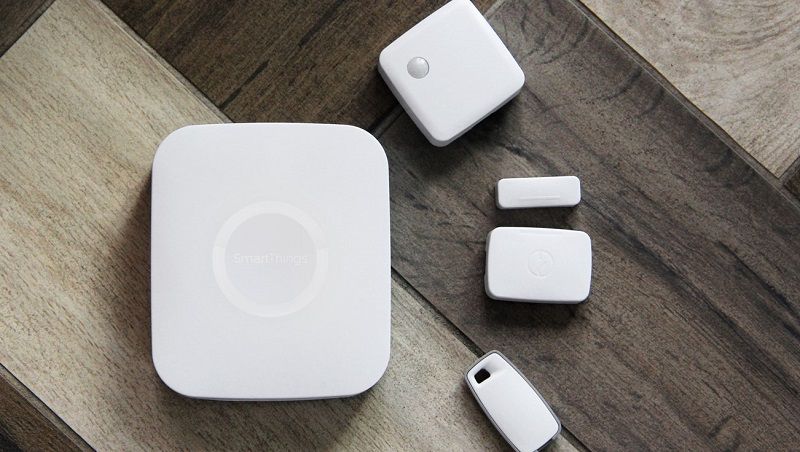
Samsung SmartThings: an introduction
When anyone talks about SmartThings, they’re really talking about two separate but interconnected parts of the same platform –the SmartThings smart home software and the SmartThings family of physical products that includes smart light bulbs, locks, thermostats, cameras, doorbells and more.
Sign up for breaking news, reviews, opinion, top tech deals, and more.
First off, let it be said that all these smart home products are neat and could probably have worked five years ago independently of one another to serve their purposes. But what Samsung has done with SmartThings is united them under one banner, given them the ability to talk to one another and made them controllable from your phone or tablet.
But there’s one key to the puzzle here and that’s the SmartThings Hub. It’s sold separately from all the other products and that’s because it’s the proverbial and sometimes quite literal brains of the operation. (That being said, if you want to pick up the hub with a few sensors it does come in the Home Monitoring bundle, described in detail down below.) The Hub connects to your router via a wired ethernet connection and infiltrates your airwaves with a signal that the smart home devices respond to.
Once the hub is installed, it’s time to download the accompanying iOS, Android or Windows app, and start syncing your devices – usually a short and painless process. Depending on what product you set up, you can either start using it independently – if, say you bought a security camera or thermostat – or part of a larger ecosystem by creating routines, i.e. a set of commands that are executed under certain conditions.
We’ll dive into these more in a minute, but think of routines as instruction sets. One application of a routine is if you’re leaving the house, for example, your smart home will understand to turn off the lights, lock the door, turn off the air conditioning and close the blinds without you ever lifting a finger. There’s also something called modes, which is basically the state that your smart home is in at a given point. It sounds a bit convoluted at first, but it all makes sense once you figure out your first routine, which we’ll cover in detail down below.
OK, here’s the coolest part: all the products you’ve seen or heard about so far – these are just the beginning. There are hundreds of companies working on smart home products as we speak – some of these will help you sleep better, work out harder and, well, generally improve every aspect of your life. We’ll talk more about the future below, but know that by buying into the SmartThings platform you’re not just getting the hundred-or-so products available today, but the hundreds or possibly thousands that are coming tomorrow, too.
Which products work with Samsung SmartThings?
Now that we covered the basics, let’s talk about all the cool smart home hardware you can pick up alongside your smart home hub.
There’s the kind of tech you’d expect to be here – smart thermostats like the Honeywell Lyric Thermostat and Ecobee 3 – but also more niche devices, like key fobs, outdoor sprinkler controls and arrival sensors that let you know when people leave and enter the home.
There's also the Smart Home Connect, a Wi-Fi mesh router that has 802.11 a/b/g/n/ac wave 2 Wi-Fi built-in and speeds of up to 866Mbps @ 5GHz, 400Mbps @ 2.4GHz and a range of 1,500 sq ft. Of course, it has SmartThings built into it, which means it could replace your standard hub if you're looking for something a bit more multipurpose.
You can see a complete list of products over at Samsung’s website, including its own devices, like water leak sensors, motion sensors, and multipurpose sensors. Samsung also sell a handy button that can be used to control a range of these devices, as well as monitoring the temperature in your home.
We won’t write out every single product that works with SmartThings (that’d take ages) but what we can do is highlight the products we’ve found most helpful or interesting, giving you a point of reference and a few ideas of how to build out your smart home of the future.
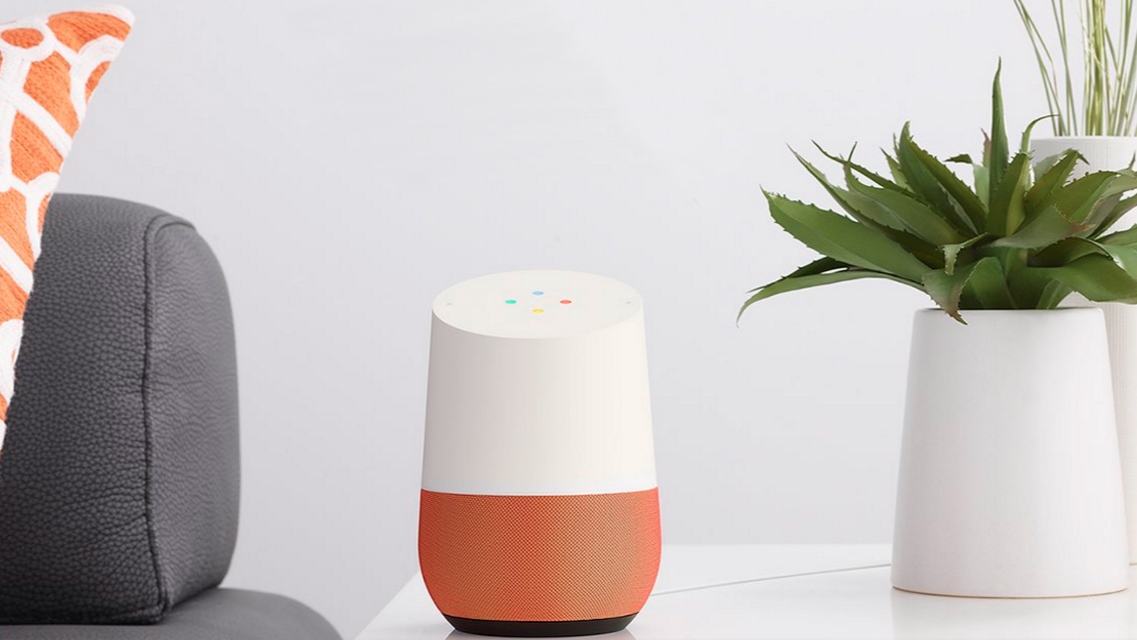
Best smart assistant for SmartThings: Google Home
It’s a tight race between the Google Home and Amazon Echo when it comes to best overall smart speaker. But what really seals the deal for the Home as a SmartThings component is its ability to not only sync seamlessly with all your devices, but allow you to link into Google’s family of smart home products, too. With Home, you’ll be able to send videos to your Chromecast, give directions to your Nest Thermostat and check-in with your router if you buy Google Wifi. It’s two smart home systems for the price of one.
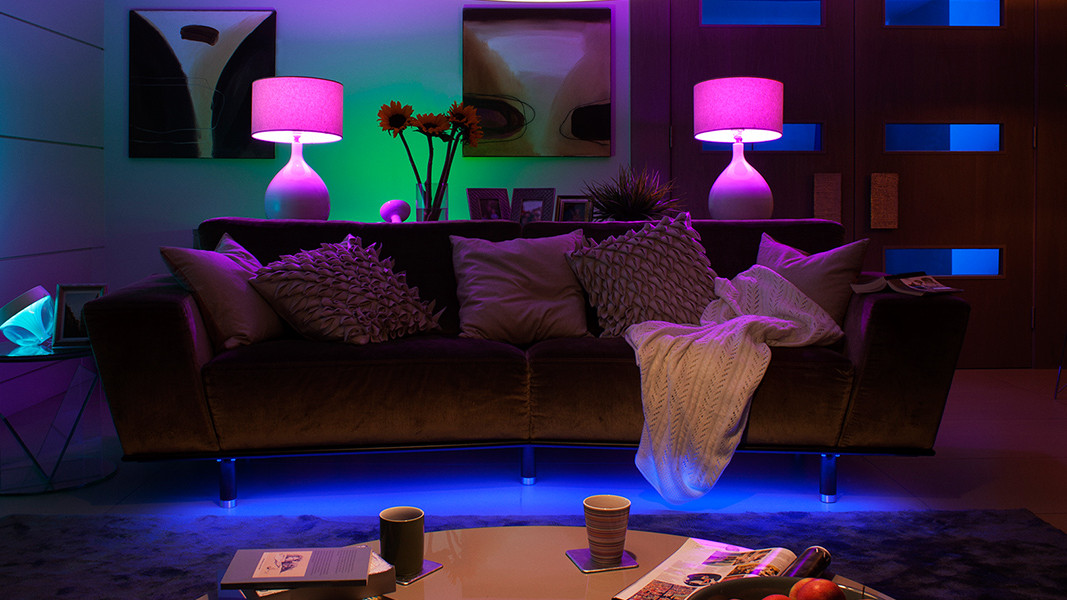
Best smart light bulb for SmartThings: LiFX Color 1000
While Philips Hue has long been the market leader in the smart bulb space, our favorite has always been the LiFX series of smart bulbs – they’re easy to setup and, considering how temperamental smart home tech can be, pretty reliable, too. They may not be the most affordable lights on the market and not the kind of thing you’d use to deck out your whole house, but buy one or two for a living room or game room and we think you’ll be impressed.

Best smart thermostat for SmartThings: Ecobee3
If you just ask us which of the three main smart thermostats – Ecobee3, Honeywell Lyric or Nest – is the best, we’d tell you to go for the Nest. It’s the easiest to setup and the most feature-rich of the group. That said, Nest doesn’t play nicely with Samsung SmartThings.
If you’re looking for the best thermostat will work with your new smart home center, you should check out the Ecobee3. Not only is it sharp-looking and feature a touchscreen, but it comes with a wireless sensor you can place anywhere in your home to make sure even the tough to heat places are getting enough love.

Best security camera for SmartThings: Samsung SmartCam HD Pro
Look online and you’ll find a dozen-or-so connected security cameras that promise to keep your home safe while you’re away. Problematically, however, not all of these work with Samsung’s SmartThings platform. The one that’s guaranteed to do the trick is Samsung’s very own SmartCam HD Pro that offers full 1080p streaming, 128-degree viewing and can automatically switch on when it detects motion – meaning there’s no need for a separate motion sensor. There are better smart cameras out there, but Samsung’s SmartCam works with SmartThings and does the job the just fine.
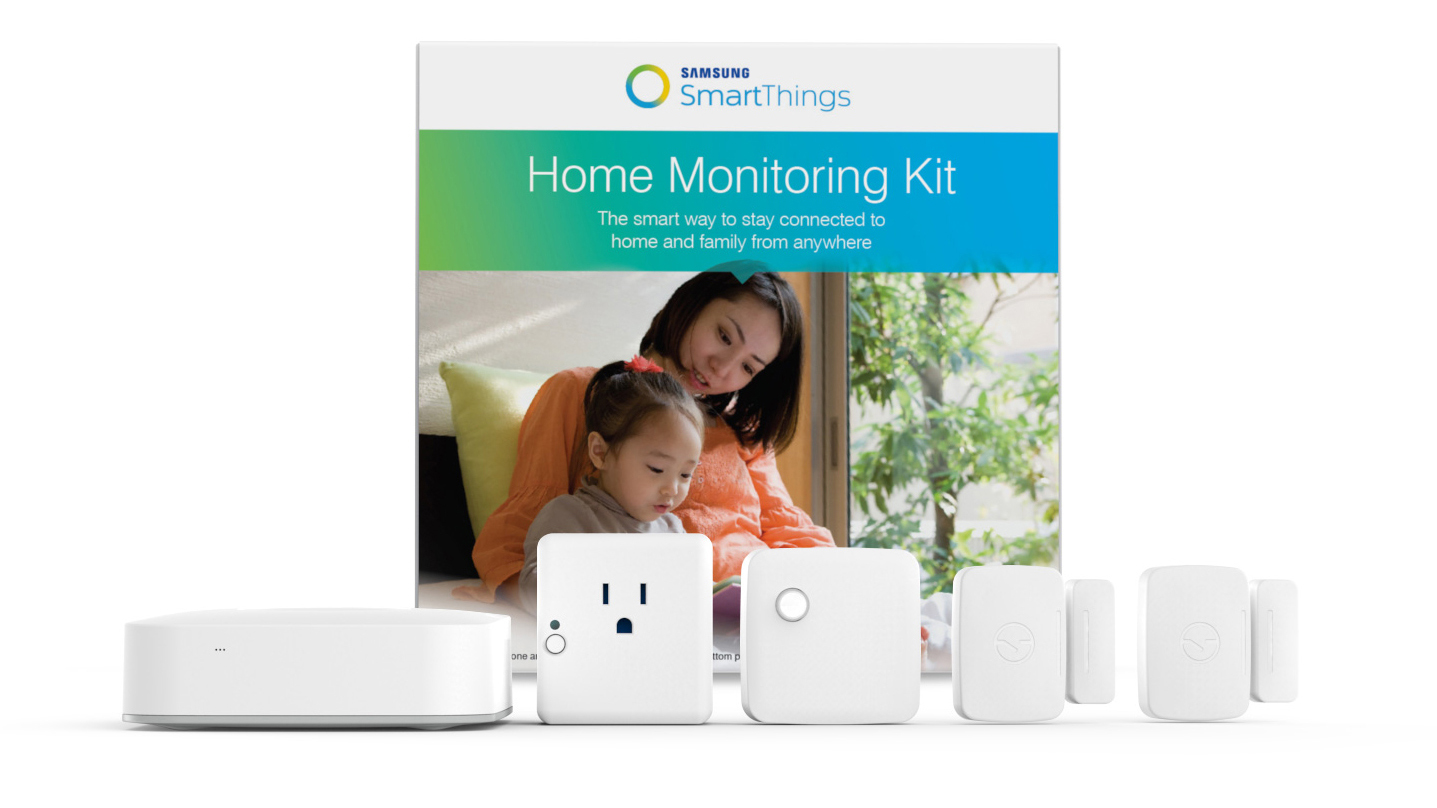
For everything else: Samsung SmartThings Home Monitoring Kit
We could go through and rattle off the best sensors, outlets and motion detectors. We could, but the best option for all of the above comes in the Samsung SmartThings Home Monitoring Kit. The kit includes one SmartThings Outlet, two Multipurpose Sensors, one Motion Sensor and one SmartThings Hub. Pick up one of these then it’s easy to expand out to any of the other products we’ve mentioned so far.
Samsung SmartThings sample routines
By now you should have your SmartThings Hub setup and the app downloaded on your preferred mobile device. All set? Good.
The SmartThings app ships with four set routines: Good Morning! Good Night! Goodbye! and I’m Back! These routines are almost useless at first without being hooked up to any devices. The only thing they’ll do when pressed is change the mode of the system to Home, Away or Night.
The SmartThings app ships with four set routines: Good Morning! Good Night! Goodbye! and I’m Back!
So how do you get them to, you know, actually do their job and automate your smart home? Add a few products and touch the gear icon in the top right of each box. Start your smart home hardware collection by picking up a smart bulb, thermometer, outlet, door lock and camera. That should be enough to get us started.

Potentially your morning could start as soon as the sun rises (or, if you’re like us, around 8:30am during the week and close to noon on the weekend) and automatically turn on your smart light in your bedroom. Trigger the thermometer to turn on the heat and turn on your smart outlet that’s hooked up to the toaster and/or coffee maker. If you want to add another layer to this, you could trigger this event when a motion sensor in, say, your kitchen, picks up movement after 6 o’clock in the morning.
Leaving the house? Create a routine where, when SmartThings doesn’t detect your smartphone in the house anymore, it automatically locks the front door, turns on your security camera, turns off all the lights and smart outlets and turns off the heat. If you’re leaving the house after the sun goes down, you could always have your smart home leave the outdoor light on just to give the appearance that someone is home. Coming back? Reverse all of the above.
Finally, when it comes time to bed, shut everything down and have Samsung text you “Goodnight!”
The future of SmartThings and the smart home
So where is SmartThings going now that it has its foot firmly planted in the doorway? The path for the platform is clear – it has to continue to bridge gaps between companies like it’s been doing for the past year or two, and actively pursue its own solutions from inside Samsung. As much as we like a lot of the third-party solutions out there, it’s more likely that skeptics will be a little less uptight if they see Samsung’s name on every box.
Samsung’s also got some competition – both Google and Apple have their own smart home solutions in the form of the Made by Google platform and Apple HomeKit. Both these solutions are relatively far behind Samsung in terms of quality and number of products that they support, but it could only be a matter of time before these companies put their full force behind smart home tech. Beyond those, there are a number of smaller, third-party solutions out there like Stringify that can connect your smart devices without a hub.
Considering smart home tech’s growing presence in consumer tech, it’s a space we expect to see continue to grow in 2019 and beyond, powered both by large and small developers.

Nick Pino is Managing Editor, TV and AV for TechRadar's sister site, Tom's Guide. Previously, he was the Senior Editor of Home Entertainment at TechRadar, covering TVs, headphones, speakers, video games, VR and streaming devices. He's also written for GamesRadar+, Official Xbox Magazine, PC Gamer and other outlets over the last decade, and he has a degree in computer science he's not using if anyone wants it.